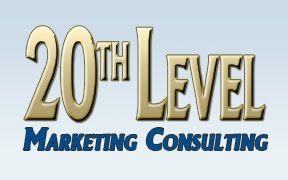The New York Times has talked to some unnamed book publishers, who must have been getting the impression that customers don't exactly believe that e-books should cost $15. This article lists the logic of these unnamed publishers in pricing e-books at that level. Fundamentally, they point to their overhead that needs to be paid for, production costs of e-books being the same as for regular books, and how, well, even if they do make a bit more on e-books it's because they need to keep the poor bookstore chains alive, so they price e-books high to keep from selling too many of them which would reduce the sale of paper books and send bookstores into oblivion.
There are so many things wrong with this logic it's hard to figure out where to start. Let's look at one unspoken assumption first: Their logic assumes that each e-book sold means one less physical book sold. If you only ever addressed your marketing to people who already buy your books, I still don't think this would be entirely true. There have been no studies on this subject that I'm aware of. Mike Stackpole address the issue in this essay on his blog.
The fundamental logic of e-books is that you have eliminated many expenses: printing, warehousing, shipping, returns, lost sales from being out of stock, and the extra margins given to distributors and retailers. All you're left with are transaction costs (getting less all the time, and generally around 3%), the overall cost of your operations (which can, as Mike points out, be conducted nearly anywhere, and most of anywhere is cheaper than New York City), your production costs (graphics, art, typesetting), and the cost of paying the author. Oh, yes, and of course any marketing costs you may have, such as web sites, PR, book tours, advertising... and all of those costs you should be spending in proportion to what you think you're going to sell of the book.
This all means that with an e-book, you can experiment much more with pricing to find if lower pricing actually generates more total profit for you. If your fixed costs for the book are less than $1, then the important thing is not whether you charge $2 or $20 for the e-book... the important thing is the total revenue you take in and the net profit you're left with. Usually the author costs are variable, being a royalty based on the selling price. If you as publisher or author get $10,000, do you really care if it was from the sale of 1000 books that earned you $10 apiece, or 10,000 books that earned you $1 apiece?
The only part you should really care about is whether you could have generated a bigger pile of cash by pricing the e-book differently, or by spending more or less on marketing (and how you chose to market). This is the sort of thing each publisher should learn through experimentation. Trying to set prices with your gut, and then spending time preaching to the customers about how you know what's best for them and the world, is a recipe for failure. You'd think the example of the music industry should have been sufficiently instructive... but it appears the publishing business is planning on similar head-in-the-sand mistakes. Small publishers should avoid this.
Anthropic and the Future of Copyright
1 month ago





No comments:
Post a Comment